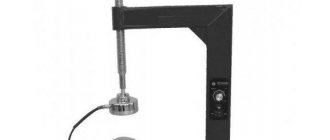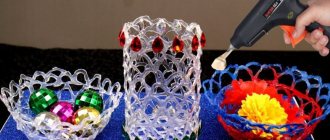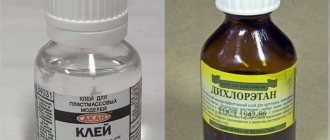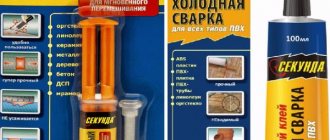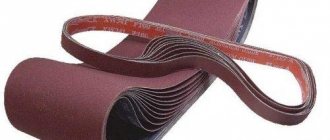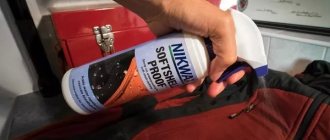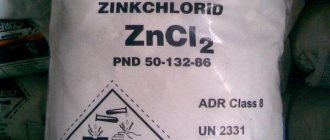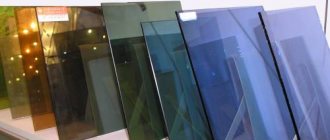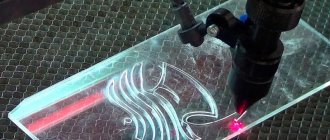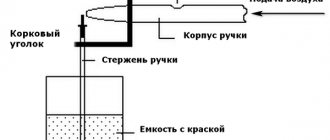People today use many materials for different purposes, among them plexiglass, which is also called extruded acrylic, should be highlighted. Sometimes you can hear another name - plexiglass. You’ve probably encountered it more than once, but few people know about the peculiarities of working with it.
But if the work requires gluing, then this issue should be approached in more detail. For this material, one of the following adhesives can be used, each of which has its own positive and negative sides. You can learn about them from the description and consumer reviews.
The best way to glue plexiglass
Both for repairing broken ones and for assembling new products, you should use suitable glue.
How to glue plexiglass:
There are two types of specialized compounds for gluing plexiglass:
- Compositions based on acrylic fillers and strong organic solvents. In composition they are very close to the plexiglass substance, which makes it possible to obtain a homogeneous and sufficiently strong connection.
- Adhesives based on epoxy resins are excellent for filling and repairing cracks; the joint takes a long time to harden, but epoxy can glue tightly.
In addition, plexiglass can be dissolved, which means it can be glued together with strong acids:
- vinegar;
- formic;
- some others.
It will not be possible to glue plexiglass with food grade vinegar (acetic acid with a concentration of 7-9%), you will need at least 70% vinegar essence. Acetic acid does not dissolve the surface layer of the material, but only softens it, so the parts will have to be compressed tightly and held for a long time.
Information about vinegar essence
If you are thinking about the question of how to glue plexiglass at home, then you can consider using vinegar essence. According to buyers, this composition is superior to industrial Acrifix in a number of properties. However, before gluing a large number of parts, it is first necessary to check the adhesive seam for durability. Consumers advise using vinegar essence with extreme caution. There are also disadvantages, manifested in cracks on the bends of parts, which will be stressed during operation.
Which glue to choose
According to their operating principle, all adhesives are divided into two large groups:
- dissolve the surface layers of both parts being glued, ensure their interpenetration, the parts and the seam material form a single whole. Sometimes this type of gluing is called “cold welding”.
- The surface layers do not dissolve to any significant depth; between the parts there is a layer of adhesive, which ensures adhesion. This connection is less durable because plexiglass has very low porosity. The adhesive, even one with high self-adhesion, simply has nothing to cling to.
It would be best to choose a special glue for plexiglass. Such compositions can be purchased at the store or made independently.
Glue for plexiglass
Important! adhesive components are highly active chemicals, they are hazardous to health and are highly flammable. Therefore, they must be handled with great care.
Sequence of selection and types of glue
After the brand has been found and deciphered, you need to go to the store or find glue at home. It is best to look for packages with instructions, since they are the ones that tell you which polymers this or that glue can be used with and which it cannot be used with. The worst bonding materials are polyethylene, fluoroplastic, polypropylene and polystyrene. In such cases, it is best to use two-component glue. There are two types of adhesives:
- The first type dissolves the edges of the fault and allows them to harden. Solvents cannot solder all types of plastic - some types melt too much, and some are too resistant. When used correctly, solvents restore a broken item to its original state.
- The second type forms a fastening layer. This glue is much easier to use, since you don’t have to worry about compatibility, but the layer can be weak or may not react at all with the edges of the tear.
You need to use the first type with full confidence in its compatibility with plastic. To be sure, you first need to buy glue, focusing not on advertising, packaging or the seller, but on the glue instructions and reviews. In addition to the polymers mentioned above, the instructions may include the following types of plastic:
- plexiglass - PMMA;
- polyamide - PA 66;
- polyurethane - PUR;
- polycarbonate - PC;
You need to read very carefully what exactly the glue is not suitable for. Therefore, the process of selecting the ideal adhesive looks like this:
- Find out exactly the specific material from which the broken item is made.
- Find out what glue to use to glue plastic in a broken object, focusing on instructions and documentation, reviews and articles about the working mechanisms of this or that type of glue.
- Select and buy the desired composition.
- Start gluing.
Reading all the information about the type of glue you are choosing is a wise investment of time, since it will not be possible to firmly glue plastic together at home.
Types of adhesives
The market is replete with many types and brands of glue. There are thermal, liquid, reaction and contact adhesives. To choose glue as effectively as possible, you should know the features of each type:
- Hot melt adhesive is a special type of adhesive. The main feature is that this type acquires beneficial properties only if it is heated to 110-230 degrees. To work safely, you need a special device that will allow you to accurately and easily apply glue to plastic. Not applicable to plastics that melt at the adhesive's active temperature.
- Liquid glue is the most popular type; the famous PVC belongs to it. Consists of a solvent and a main substance. It works by allowing the solvent to evaporate at room temperature or upon contact with oxygen. The main thing when working with liquid glue is air contact with the seam, otherwise the evaporation of the solvent may take a long time. The stronger the solvent, the stronger the adhesive.
- Reaction glue - found in one-component and two-component forms. One-component ones consist of a hardener. These include “Superglue” and “Poxypol”. The hardener dries on the seam and securely holds both sides together. Two-component ones consist of a hardener and a fixer, which allows the combination to be securely attached to any surface. The most famous representative is epoxy resin. Great for slippery and smooth surfaces where other glue will simply run.
- Contact glue is one of the most reliable options for reconstructing plastic elements. It differs in that it is first applied to the sides of the tear, left for 10-15 minutes, after which the edges of the tear are pressed tightly against each other. The famous “Moment” belongs to this variety. Almost every representative of this group contains toxic substances, so the room should be ventilated when using.
It is thanks to this diversity that at the moment it is possible to glue any material to plastic. The two-piece and contact types are great for joining different types of plastic, since it is not always possible to glue plastic to plastic using liquid glue.
Adhesive self-adhesive films
Self-adhesive films can be a good alternative for repairing plexiglass products. Their undoubted advantage is the ability to glue both two plexiglass parts, and plexiglass with other materials.
There are three main types of such films on the market:
- Baseless adhesive films. In fact, it is a thin layer of adhesive several tens of microns thick. It is stored between two transport polyethylene films, which are removed immediately before gluing. Such adhesive films can bond smooth, perfectly flat parts with a low coefficient of thermal expansion.
- Films having a thin transparent base, a few hundredths of a millimeter thick. Also requires a smooth surface, but the requirements are somewhat lower. The connection turns out to be less strong and theoretically detachable - you can try to remove the film.
- Films with a thin foam base, similar to the so-called double-sided tape. The thickness of the base ranges from tenths to several millimeters. Such films can be used to glue plexiglass, even if the surfaces are not very smooth, but the strength of the connection is very low. Suitable for structures that do not experience heavy loads.
Adhesive tape
Requirements for surface preparation and maximum loads that the joint can withstand are specified in the instructions supplied with the specific film.
How to remove glue from plexiglass?
During the work, excess glue may go beyond the seam and harden, forming unsightly streaks. As a result, the gluing area looks sloppy.
How to make a seam invisible? There are two ways to do this:
Wipe off the hardened glue from the plexiglass with a solvent. The solvent can be gasoline, kerosene or universal solvent. A cotton pad is moistened with one of these liquids and wiped over the surface at the gluing site, wiping off the softened glue. It should be remembered that excess solvent can damage the surface of the plexiglass, so it is applied strictly to areas that require cleaning.
Mechanical method
The dried glue is carefully cut off with a blade, scalpel or stationery knife. It can also be sanded with sandpaper. This type of removal often leaves scratches on the plexiglass, spoiling the appearance of the product.
They can be removed with fine-grained sandpaper followed by polishing. You can polish it until it shines manually with a felt disc coated with GOI paste or regular toothpaste. However, this polishing method is time-consuming. It is more correct to use an electric drill with a piece of cylindrical felt glued to the drill.
Such removal often leaves scratches on the plexiglass, spoiling the appearance of the product. They can be removed with fine-grained sandpaper followed by polishing. You can polish it until it shines manually with a felt disc coated with GOI paste or regular toothpaste. However, this polishing method is time-consuming. It is more correct to use an electric drill with a cylindrical piece of felt glued to the drill.
It is recommended to remove light-curing adhesive that extends beyond the edges of the joint before polymerization begins. When frozen, it is firmly fixed to the surface, and mechanical removal can damage the gluing area.
I hope that the material presented is quite enough to reliably glue organic glass in any situation. The following video is one of the options for gluing the material.
Adhesive options for plexiglass
Speaking about popular compounds that can be used to glue plexiglass, it is worth focusing on the following:
- compositions of the Acrifix family, specially developed for acrylic-based materials;
- mixtures based on dichloroethane;
- acetic acid and its essence;
- compositions of the Colacril family;
- Cosmofen glue. It is also used to fasten wood and plexiglass;
- adhesives produced by Era-Henkel: Moment, Moment - seconds and others.
Acrifix 117 glue
One of the most popular compositions for gluing plexiglass has a long-standing and well-deserved popularity among home craftsmen.
It has the following advantages:
- excellent connection strength;
- high transparency of suture material;
- short setting time;
- low toxicity, especially compared to dichloroethane;
- high penetrating power makes strong squeezing of parts unnecessary.
Unfortunately, Acrifix 117 also has disadvantages that make it difficult for home craftsmen to access:
- packaging in liter jars;
- high price.
Acrifix 117
Experts recommend adding one tenth of the volumetric part of Acrifix 116 to Acrifix 117. This helps to better fill micro-irregularities and increase adhesion.
Acrifix 116 glue
The composition is close to grade 117, but differs in greater thickness and viscosity. It is packaged in convenient 100 ml tubes, which makes it easy to use in home workshops.
It can be used to glue rough surfaces that are not perfectly smooth.
Dichloroethane
Budget replacement for expensive formulations. Sold in chemical components stores and radio parts stores. If the surfaces are perfectly smooth and even, dichloroethane can be used to glue them together without any additives. Apply it using a medical syringe into the gap between the parts to be joined. The seam is perfectly smooth and highly transparent. If you properly prepare the surfaces, the seam will be free of bubbles.
If the surfaces are not perfectly smooth, then there is another way to glue them. A little plexiglass shavings (sawdust) is poured into a bottle of dichloroethane; after dissolution, a thick composition is obtained that can be applied with a spatula or wire.
Dichloroethane
Attention! Dichloroethane is a very active substance and very dangerous to health. It should be stored in a tightly closed container in a place safe from children.
In the room where they work with dichloroethane, it is necessary to have high-quality ventilation.
Vinegar essence
This is another inexpensive substitute for purchased professional compounds. Allows you to glue plexiglass quite firmly.
The disadvantages include the short service life of the seam compared to other compositions.
Serious internal mechanical stresses arise at the bends of the parts, which can lead to cracking of the plexiglass.
Experts recommend using vinegar essence to glue small products that are not subject to heavy loads.
Glue colacril 20 and colacril 30
The Colacril family serves as a functional replacement for the expensive Acrifix family of adhesives.
Colacril 20 is highly fluid, while Colacril 30 is viscous.
Experts mix them to obtain the optimal consistency for each specific compound.
The compositions allow you to glue parts and get a beautiful and even seam, transparent and without bubbles.
The disadvantage of the Colacril family compared to Acrifix is the formation of small cracks at the bend of plexiglass, caused by internal mechanical stresses. At the same time, the appearance deteriorates, but the strength is maintained.
Secondary glue moment and Cosmofen
Most second adhesives are based on cyanoacrylate. Regardless of the type of packaging - in metal, plastic tubes or bottles with a narrow spout for application - they are very similar in their properties.
A common property is that they do not dissolve plexiglass, but create an intermediate adhesive layer.
Therefore, experts do not recommend using them for connections subject to any loads. The most they can do is grab a small part for a toy or decoration.
The adhesive layer is opaque, the joint is very noticeable.
Cosmofen
Dangerous! “Moment” can glue the skin of your fingers so much that you will have to see a doctor. The use of protective gloves is mandatory.
Description and reviews of Acrifix 117
When choosing adhesive for plexiglass, you may prefer the one mentioned above. According to consumer reviews, this option is worthy among the others. Some consumers even consider it the best. However, this composition is convenient to use only in mass production. Why this is so will be mentioned below.
Among the features should be highlighted:
- high strength;
- durability;
- transparency;
- speed of setting.
Buyers claim that this composition has many advantages, one of which is less toxic compared to available dichloroethane. It should also be noted that it has high capillary properties, because the material penetrates well into cracks and narrow crevices in plexiglass. At the same time, according to buyers, there is no need to influence the composition; it will flow on its own.
When choosing adhesive for plexiglass, you should also pay attention to some of the disadvantages of Acrifix 117, which are the high cost and large volume of packaging. That is why this composition is not very suitable for home gluing, because it is sold in containers with a capacity of 1 liter. In addition, this mixture cannot be found in all stores; last year you would have had to pay 6,000 rubles for a liter of this glue. It is quite possible that today the price will rise relentlessly. As a recommendation for use, it should be noted that for better penetration of the mixture into small cracks, it is necessary to dilute it with Acrifix 116, using a ratio of 1 to 10.
Make your own glue for plexiglass
To make plexiglass glue you will need a strong organic solvent and plexiglass shavings or sawdust. You can also use small pieces that fit in a bottle.
The following is used as an adhesive component:
- acetone;
- dichloroethane;
- solution of polymethyl methacrylate in dichloroethane.
Add crushed plexiglass to the bottle with the solvent in small portions, stirring constantly with a wire loop or glass rod. The amount of plexiglass is established experimentally based on the required consistency.
Another recipe for preparing a mixture that can be used to glue plexiglass involves dissolving ordinary polystyrene foam (extruded polyurethane) in 646 solvent. The preparation process is exactly the same, with the only difference being that the foam does not need to be crushed. It dissolves perfectly.
After the composition has become visually homogeneous and transparent, it must be left for several hours until the dissolution process is complete.
The mixture should be mixed thoroughly before gluing.
Composition of plexiglass, what is it
PLEXIGLAS® GS is produced by casting, and PLEXIGLAS® XT by extrusion. The simple name is plexiglass (plexiglass). There is no difference in machining of both types. Plexiglas is a synthetic material. It is made from acrylic resins to which additional components are added.
The result is a material with high levels of strength, reliability, and translucency. To change the characteristics and appearance of the finished sheets, during manufacturing the mixture is saturated with stabilizers, dyes, and plasticizers.
Ready-made material is used in the following areas:
- Manufacturing of lamps.
- Creation of interior partitions, domes, pedestals, decorative elements for interior decoration.
- It is used to glue the walls of shower stalls, swimming pools, and bathtubs.
- Creation of shop windows, aquariums, advertising stands, signs, banners.
Shelves, stands for consumer electronics, and transparent tables are often glued together from plexiglass. To understand how good a material it is for use, you need to understand its strengths and weaknesses.
Advantages:
- High strength index. In this parameter, plexiglass is superior to ordinary glass.
- Low specific gravity. Thanks to this, there are no problems with installing bulky panels.
- Does not collapse under the influence of sunlight, moisture, or detergents.
- High transparency rate.
Flaws:
- Low wear resistance. The surface is easily scratched and damaged by sharp, rough objects.
- Does not withstand prolonged exposure to open flame.
- In order for a product made of this material to retain its original appearance over a long period of time, it is necessary to regularly wipe it with a cloth moistened with a cleaning solution.
When a product breaks, you need to know how to glue the plexiglass together in order to restore the integrity of the item, and then use it further.
Glue at home
To glue firmly, lastingly and unnoticeably, you should:
- Using a rag soaked in gasoline or alcohol, thoroughly degrease the gluing area. Even the slightest marks left by a finger can damage the strength of the seam.
- Fix the parts so that there is a small gap between them.
- Apply glue to both parts. An injection syringe is perfect for this purpose. It allows you to carefully dose the applied mass. The syringe needle should be refined with a file or an abrasive stone, removing the bevel. Leaving the bevel may cause splashing. Using a syringe, the adhesive mass is injected into the gap between the parts.
- Press the parts tightly against each other and secure until the connection sets. Thick plexiglass can be clamped in a vice or clamps. More fragile parts are tied to each other with an elastic bandage.
- Allow to stand from a minute to half an hour, depending on the volume of adhesive added.
To protect surfaces that are not to be glued from glue, you can cover them with masking tape (paper tape) in advance.
Description of UV glue and reviews about it
UV glue for plexiglass is used quite actively today. According to buyers, you should not apply the composition in too much quantity. The glue should be distributed in a wavy line, after which the parts should be well pressed to each other. If you did everything correctly, the glue will distribute itself along the seam. In order to harden the mixture, it must be irradiated with an ultraviolet lamp.
It is best to carry out this work in two stages. First, the seam is processed to achieve seventy percent strength, after which excess glue is removed and training is carried out. If you use this glue for plexiglass, you can easily glue the parts together with your own hands, but for this it is recommended to use a long lamp that will correspond in size to the length of the seam. Home craftsmen note that the glue begins to harden after such exposure after about 35 seconds, but complete hardening will occur somewhat later.
Security measures
Both purchased and homemade gluing products are highly chemically reactive and harmful to human health.
To maintain your health, you should follow the safety rules:
- work in a well-ventilated area;
- when working with dichloroethane, use exhaust ventilation;
- Use protective gloves and safety glasses.
If the adhesive accidentally comes into contact with the skin or mucous membranes or is swallowed, consult a doctor immediately. Be sure to take a tube with you.
Advantages and disadvantages of organic glass
Organic glass has a number of advantages that have contributed to its great popularity. These include:
- has good anti-shock properties;
- relatively light weight (allows you to create complex and rather bulky structures);
- is an excellent dielectric;
- has high throughput over the entire range of the visible spectrum;
- quite resistant to atmospheric factors (high humidity, various types of precipitation, low temperatures);
- has good environmental performance (when heated, no harmful chemical elements are released);
- sufficiently high resistance to the effects of mildly aggressive agents;
- good mechanical properties (quite easy to process and deformable);
- has a wide range of colors;
- good operational safety (if damaged, no dangerous fragments are formed).
Multi-colored plexiglass
The main disadvantage of this material is its poor resistance to external influences from solid objects (scratches, cuts, and cracks quickly form). In addition, the formation of a surface electric charge due to its electrostatic properties can be considered a negative phenomenon.
How to glue polypropylene - a step-by-step process
In order to glue polypropylene tightly, you must adhere to the following rules:
- pre-degrease and clean the surfaces, even if the manufacturer claims that this step is optional,
- apply the adhesive in a thin, even layer,
- soak the parts for at least three minutes,
- Leave to dry for several hours until completely set.
You should definitely use protective gloves to prevent glue elements from getting on your skin and causing irritation. Under no circumstances should the mixture come into contact with the face. If this happens, wash with running water.
Repairing polypropylene pipes using glue - secrets
All adhesives for polypropylene pipes contain polyvinyl chloride, as well as additives to improve adhesion. They must be used in rooms with temperatures from +5 to +35C.
VIDEO ON THE TOPIC
To repair pipes you need:
- brush with natural bristles,
- glue gun
Stages of work:
- Cut the pipes with pipe cutters, and also use sandpaper to clean the edges of the cuts and get rid of burrs.
- Connect the pipes into a single structure and mark the places for gluing.
- Disassemble the structure and degrease the areas where the glue will be applied.
- Apply the composition with a brush in a thin layer, and also treat the area of the fitting sockets using a glue gun.
- Insert the pipe into the fitting hole, based on the marks made with a marker. Parts must not be rotated or wobbled. After a minute, the glue should harden. Remove excess composition with a napkin.
- To check the quality of gluing, after a day you can run water and test the pipes under pressure.
Also, many craftsmen use patches in the form of a rubber band or coupling. To secure them you will need a wire or clamp. The gluing procedure is performed according to the same algorithm, which will require turning off the water. If the repair is carried out using a collapsible coupling, it is not necessary to shut off the water.
As a good adhesive, we can recommend LN-915, intended for installing polypropylene and plastic parts for showers, bathtubs, as well as for gluing tiles.
It is characterized by heat resistance, quick setting, and high antiseptic properties.
